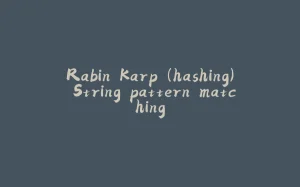1. Introduction
The Weekly Challenge, organized by Mohammad S. Anwar, is a friendly competition in which developers compete by solving a pair of tasks. It encourages participation from developers of all languages and levels through learning, sharing, and having fun.
Task 1: Beautiful Arrangement from The Weekly Challenge invites developers to find the number of beautifully arranged permutations from among all permutations generated from a positive integer.
In this post I discuss, and present my solution to, Task 1: Beautiful Arrangement, and end a brief conclusion.
The Weekly Challenge 300 deadline is Sunday, December 23, 2024 at 23:59 (UK Time). To avoid bias, consider reading this post after competing.
2. Task 1: Beautiful Arrangement
You are given a positive integer,
$int.Write a script to return the number of beautiful arrangements that you can construct from
$int.A permutation of
nintegers, 1-indexed, is considered abeautiful arrangementif for everyi(1 <= i <= n)either of the following is true:
permutation[i]is divisible byiiis divisible bypermutation[i]
Examples 1 and 2 present the expected outputs from given inputs.
Example 1
Input: $n = 2Output: 2Input: $n = 2 Output: 2Input: $n = 2 Output: 2
Enter fullscreen mode Exit fullscreen mode
For n = 2 and with i integers such that (1 <= i <= n) there are two permutations (1, 2) and (2, 1). Output: 2 because both meet the beautiful arrangement requirements.
The permutation (1, 2) is a beautiful arrangement because all of its elements match the first condition:
- At
i = 1,permutation[1] = 1satisfies the first condition, since one is divisible by one. - At
i = 2,permutation[2] = 2satisfies the first conditions, since two is divisible by two.
The permutation(2, 1) is also a beautiful arrangement because all of its elements match either the first or second condition:
- At
i = 1,permutation[1] = 2satisfies the first condition, since two is divisible by one. - At
i = 2,permutation[2] = 1satisfies the second condition, since two is divisible by one.
Example 2
Input: $n = 1Output: 1Input: $n = 1 Output: 1Input: $n = 1 Output: 1
Enter fullscreen mode Exit fullscreen mode
Example 3
Input: $n = 10Output: 700Input: $n = 10 Output: 700Input: $n = 10 Output: 700
Enter fullscreen mode Exit fullscreen mode
3. My solution to Task 1
from itertools import permutationsdef generate_permutations(n)iterable = list(range(1, n + 1))return permutations(iterable)def count_beautiful_arrangements(perms):num_beautiful_arr = 0for perm in perms:is_beautiful_arr = Truefor value_index, value in enumerate(perm):if value % (value_index + 1) == 0:continueelif (value_index + 1) % value == 0:continueelse:is_beautiful_arr = Falsebreakif is_beautiful_arr == True:num_beautiful_arr += 1return num_beautiful_arrfrom itertools import permutations def generate_permutations(n) iterable = list(range(1, n + 1)) return permutations(iterable) def count_beautiful_arrangements(perms): num_beautiful_arr = 0 for perm in perms: is_beautiful_arr = True for value_index, value in enumerate(perm): if value % (value_index + 1) == 0: continue elif (value_index + 1) % value == 0: continue else: is_beautiful_arr = False break if is_beautiful_arr == True: num_beautiful_arr += 1 return num_beautiful_arrfrom itertools import permutations def generate_permutations(n) iterable = list(range(1, n + 1)) return permutations(iterable) def count_beautiful_arrangements(perms): num_beautiful_arr = 0 for perm in perms: is_beautiful_arr = True for value_index, value in enumerate(perm): if value % (value_index + 1) == 0: continue elif (value_index + 1) % value == 0: continue else: is_beautiful_arr = False break if is_beautiful_arr == True: num_beautiful_arr += 1 return num_beautiful_arr
Enter fullscreen mode Exit fullscreen mode
My inelegant and unsophisticated solution utilizes two functions generate_permutations and count_beautiful_arrangements.
generate_permutations returns, for the parameter n, all permutations for the set where 1 <= i <= n.
-
iterable = list(range(1, n + 1))generates a list of integers where1 <= i <= n. -
permutations(iterable), imported from theitertoolsmodule, generates all permutations ofiterable.
count_beautiful_permutations returns, for the permutations iterable perms parameter, the total number of permutations in perms that match the beautiful arrangement conditions.
- The outer loop
for perm in...iterates through each permutation. - It starts with the assumption that
permis a beautiful arrangement (is_beautiful_arr = True).- The inner loop
for value_index, value in...checks if each element ofpermmatches either condition 1 or condition 2.- If all elements match either condition,
permis counted as a beautiful arrangement. - Otherwise, if any element matches neither condition 1 nor condition 2, then
is_beautiful_arris set toFalse, the loop breaks early andpermis not counted as a beautiful arrangement.
- If all elements match either condition,
- The inner loop
4. Conclusion
In this post I discussed Task 1: Beautiful Arrangement and I presented my solution. My ‘inelegant and unsophisticated’ solution works, but it has considerable room for improvement.
原文链接:My Python Language Solution to Task 1: Beautiful Arrangement from The Weekly Challenge 300



























暂无评论内容